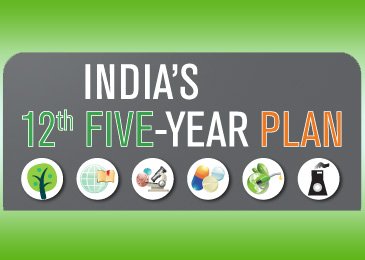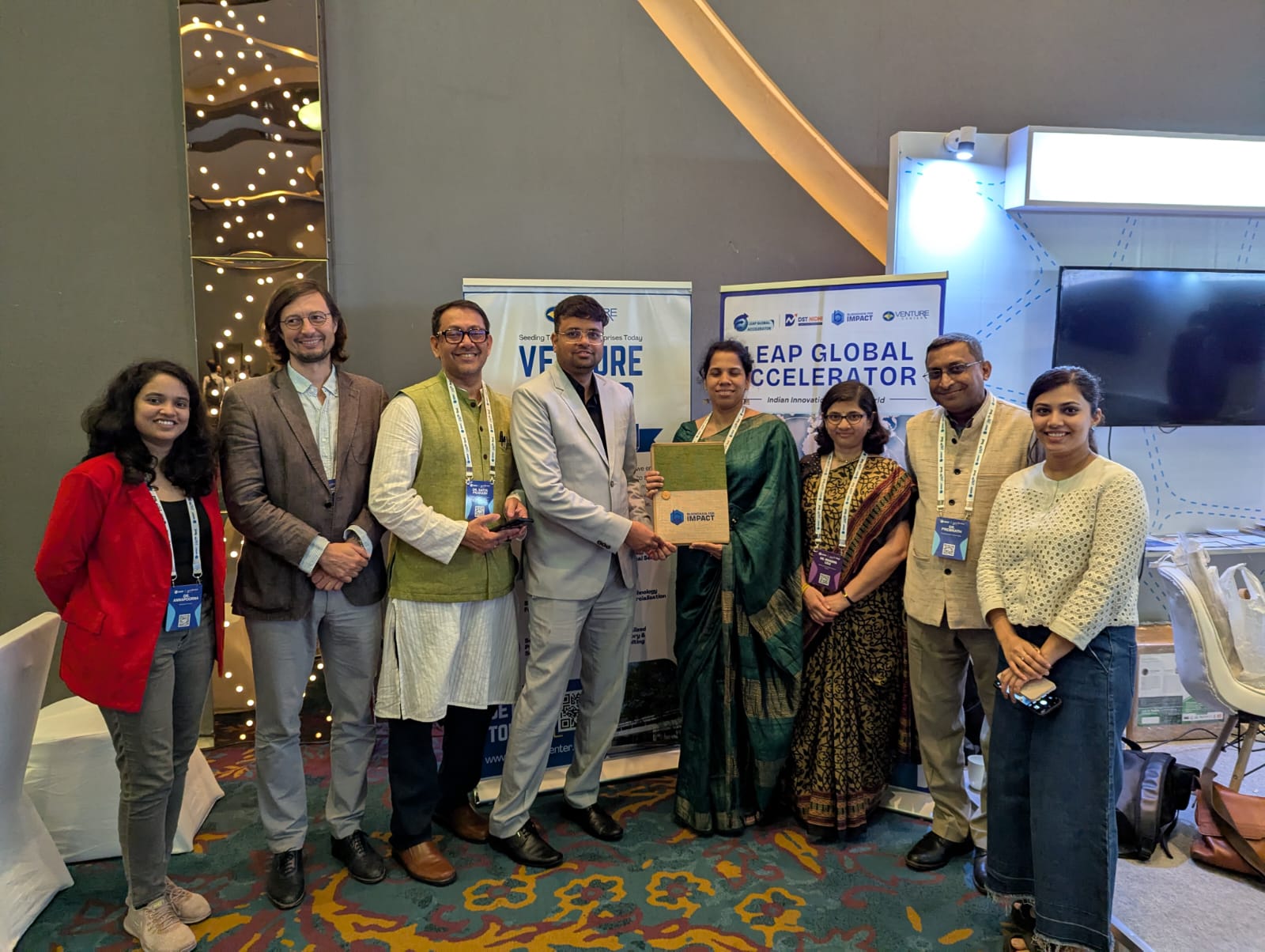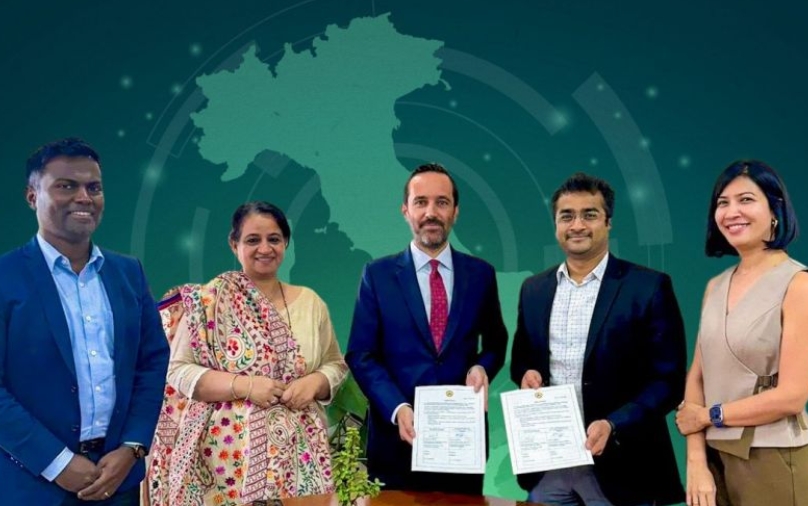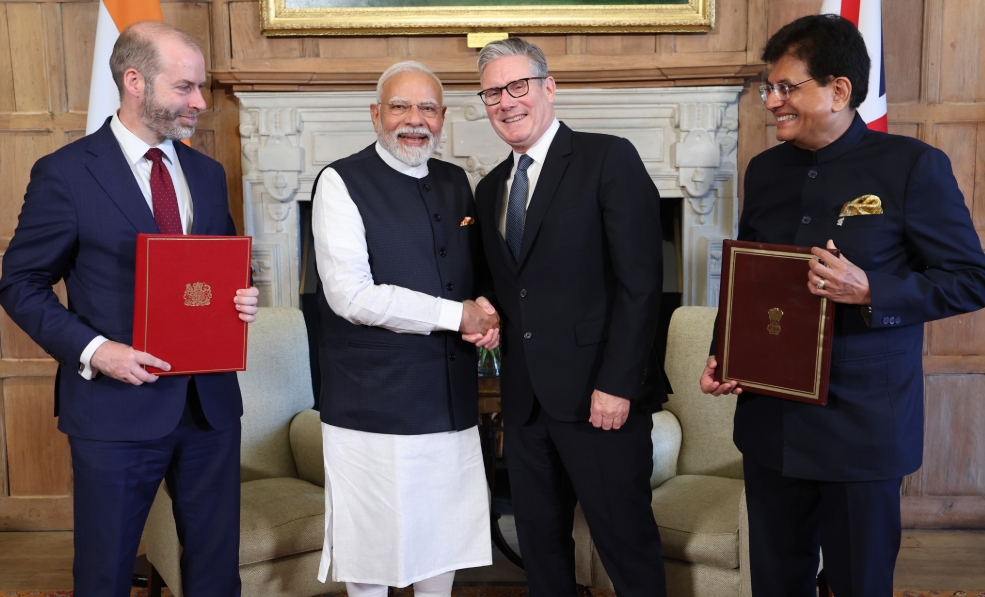Biotech gets 84% jump in 12th Plan outlay
February 15, 2013 | Friday | Features | By Rahul Koul Koul
Biotech gets 84% jump in 12th Plan outlay
India charts out its progress for the next five-year period
On December 27, 2012, as another year came to a close, the Indian government approved a plan that would chart the course of the country's development in the next five years.
The 12th Five Year Plan document is an opus that looks across sectors and stakeholders for the country' s overall progress-economic, industrial as well as social. In the report for the development of the nation's economy over the next five year period, the Planning Commission hopes to achieve an average growth rate of 8 percent, marginally higher than the current 7.9 percent at the end of the 11th Plan period.
Aiming to improve science and technology in the country, the Plan calls for an increase in research and development (R&D) expenditure to 2 percent of GDP and significantly enhance corporate sector R&D expenditure to at least 1 percent of GDP. This target is to be achieved by about 1 percent in the public sector and 1 percent in the corporate sector, including public sector undertakings (PSUs). It also calls for earmarking 10-15 percent of public investment (across all six departments of the science sector) exclusively for public-private partnership (PPP) R&D through the competitive grant process with a stipulation that comparable provisions would be made by the private sector under PPP model.
Also read: What does the industry experts say about the 12th Plan outlay
In the 11th Five Year Plan, though the outlay for the Department of Biotechnology (DBT) was Rs 6,389 crore, the anticipated expenditure at the end of the period has only been Rs 4,832.24 crore. An indicative Plan outlay of Rs 11,804 crore at current prices for the 12th Five Year has been made for the DBT, which is a 84 percent jump from the previous Plan. Emphasis would be given for connecting the state councils for science and technology (S&T) to R&D organizations like Council of Scientific and Industrial Research (CSIR), Indian Council of Medical Research (ICMR), Defense Research and Development Organization (DRDO) and so on.
A separate section on science and technology, outlines a comprehensive Plan for its initiatives, both in terms of research as well as industry. The Plan says that, "S&T is a vital aspect of national capability". The recommendations in the final draft, that was made public in December 2012, have been drawn from those given by the different Working Group Committees set up earlier. The Working Group of the Department of Biotechnology was set up in April 2011 and consisted of industry stalwarts like Dr Kiran Mazumdar-Shaw, CMD, Biocon; Dr Rashmi Barbhaiya, CEO, Advinus Therapeutics; Dr Krishna Ella, CMD, Bharat Biotech; Dr Arvind Kapur, Rasi Seeds; Dr Sanjay Singh, CEO, Gennova Biopharmaceuticals, as well as eminent researchers from academia such as Dr P Balaram, director, Indian Institute of Science, Dr A Surolia, director, National Institute of Immunology, Dr Rajesh Gokhale, director, Institute of Genomics and Integrative Biology, Dr Virander Chauhan, director, International Centre for Genetic Engineering and Biotechnology, Prof. Seyed Hasnain, distinguished professor of Biological Sciences, Indian Institute of Technology-Delhi; Dr K VijayRaghavan, present secretary, DBT; Prof. Akhilesh Tyagi, director, National Institute of Plant Genome Research and many more.
The working group suggested that the main mantra of the 12th Plan proposals would be about the overall strategy of "accelerating the pace of research, innovation, development and technology transfer to advance biotechnology as a strategic area by taking India' s strengths in foundational sciences to globally competitive levels and expanding the application of biotechnologies for overall growth of bioeconomy within the framework of inclusive development". Dr Ella, who was a part of this committee, spoke about the entire exercise very positively. He says, "For the first time an open discussion on scientific policy is happening. It is a great move from the government to bring together policy makers and industry experts to be part of the scientific policy decision-making process."
The development of the Five Year Plan has had a rather unintended impact on the industry so far. With most research institutes withholding big ticket purchases until finalization of budgetary allocations, the biosupplier industry faced a slowdown. As Dr Siva Kumar Pasupathi, country business head, LSCA, Agilent Technologies, India puts it, "The 12th Five Year Plan fund disbursement has delayed the procurement of instruments in the academia and the research segment. This has slowed down growth and affected business expectations overall."
The Plan also talks about the transformation of the National Rural Health Mission into a National Health Mission, covering both rural and urban areas, promising to have an impact on the entire healthcare setup in our nation. Most importantly, it envisages the increase in public spending in healthcare from 1.04 percent of the GDP to 1.87 percent by the end of the Plan period.
The funding in the central Plan would effectively increase to three times the 12th Plan involving an annual increase by 34 percent. The central and state funding for health, as a proportion of total public sector health funding will remain at levels of 33 percent and 67 percent for 2011-12 respectively. Acknowledging the fact that the global slowdown has had an impact on the overall growth rate, the Planning Commission calls for greater participation from all industrial sectors in fueling public-private partnerships.
The Plan also speaks about recent controversies that have stalled the progress of genetically modified (GM) research in the country, emphatically while stating that it was necessary to ensure food security for the population. It says, "Initiatives that increase emphasis on contributing to the societal development and improving the quality of life of citizens in turn have also created in some cases societal reactions stemming from issues like health and environmental safety. In the recent past, introduction of genetically modified foods and Nuclear energy are two such examples. The Twelfth Plan envisages a more effective institutional framework in linking S&T with society through a variety of outreach strategies. This is proposed to be carried out both through the scientific establishments as well as through educational program including initiatives from non-governmental organizations (NGOs)."
Targets set for DBT in 2012-17
Human Resources and Development
- Establish 100 Star Undergraduate Colleges, 100 Ramalingaswami fellowships for returning scientists from abroad, 10 finishing schools for industry-ready graduates, award 200 Welcome Trust-DBT biomedical fellowships, junior research fellows and 250 postdoctoral fellowships in life sciences.
- Setting-up of finishing school in PPP mode or consortium of industries with Government support or in partnerships with industry associations such as the Confederation of Indian Industry (CII) and Federation of Indian Chambers of Commerce and Industry (FICCI)]
- Expanding existing academic institutions to threefold in terms of human resource; setting up of extra mural research centres on or off-site to promote translational science; starting of number of disease-specific network programs; and physical infrastructure
Regulatory
- Establishment of Biotechnology Regulatory Authority of India (BRAI) under the act of Parliament and establishment/strengthening of 10 regulatory testing laboratories with good laboratory practice (GLP) standard
Institutes
- Create 25 Centres of excellence in plant sciences, animal sciences, human biology systems and industrial research; 10 new centres for translational science education and innovative research in medical schools, 20 IISc connecting basic sciences with translational R&D and two centres for policy research in agriculture and health care biotechnology
- To establish five research resources and service facilities; upgrade and redesign life science research and education in 38 universities
- Establishment and commissioning of three ongoing bioclusters at Faridabad, Mohali and Bengaluru and two new bio-clusters with clusters boards to govern, and establish incubators, common technology platforms, contract labs for SMEs, genetically modified products (GMP) facilities, research hospital and so on
- Establish five national research centres/institutions in the areas of bioinformatics and computational biology; marine and microbial biotechnology; bio-design; bioscience and bioengineering; chronic disease science and biotechnology; and infectious science and biotechnology institute in the North-East
New programs for industry participation
- Launching of eight grand challenge programs in health care and agriculture on a mission mode around national priorities in development sectors through bottom-up approach and discovery-led innovation, inter-departmental participation and separate government and management structure
- Establishment and operationalization of BIRAC and launching of two to three new PPP schemes such as ignition grants, start-up grants, shared technology incubators and bio-parks
- For translational and strategic research in agriculture, health care and environment, about 50 projects/ networks shall be launched in system biology, synthetic biology, computational sciences, nano-biology, pre-breeding of crops, photonics, molecular imaging and tissue engineering, biopharmaceuticals and drug development and other emerging areas
Targets for CSIR
- Setting up 15 spin-off companies
- —1000 patent applications to be filed in India, 1000 patent applications to be filed abroad and 75-150 nonpatent IPRs to be secured and prosecuted
- —Establishment of five new institutes such as the CSIR Institute of Synthetic and Systems Biology, CSIR Institute of Bio-mimetic Materials and such institutes
- —Set up at least five CSIR Centres for Collaborative Research with academia, R&D institutions and industry
Other programs
- Establish DBT grant-in-aid and translational centres through long term support in 10 best universities/institutions in at least 10 areas of interest
- —A National Life Sciences Resource Centre (NLSRC) with specialized research staff, informatics support and databases to network all research resources, training for skill development activities and organise a systematic information access management facilitating biology research community proposed to set up
- —The affordable health technology initiative with Wellcome Trust will be launched. It will have a pro-poor bias, focus on mass health impact and enhance our abilities to access technology from overseas in addition to from within the country
Open innovation
Open Innovation has been identified as a major platform during the 12th Plan. It shall cover an expanded version of the OSDD program, encompassing OSDD, Open Source Drug Delivery, Open Source Drug Development and Open Source Disease Diagnostics, and the Distributed Organic Chemical Synthesis (DOCS) program that envisages building a national repository of 4,00,000 small molecules by the end of the Plan through open source
Five-fold funding boost for ICMR
More than Rs 10,000 crore has been earmarked for the Department of Health Research (DHR) and Indian Council for Medical Research (ICMR) in the 12th Five Year Plan; almost five times more than the funds received in 11th Plan. The major schemes to be rolled out in the area of health research during the 12th Plan period include:
- —Establishment of multidisciplinary research units in 150 government medical colleges
- Grant-in-aid to researchers on projects involving development of affordable technologies, reagents and methods for public use
- Support human resource development for producing qualified researchers









